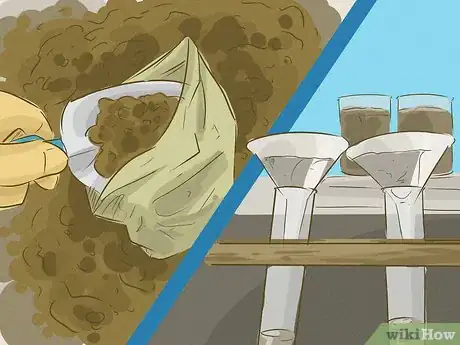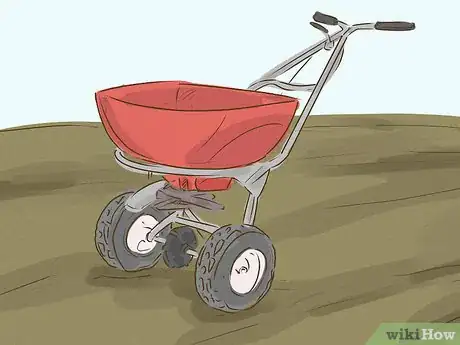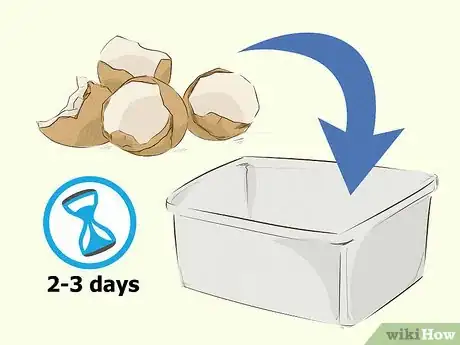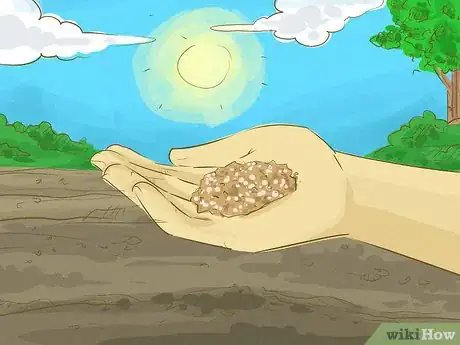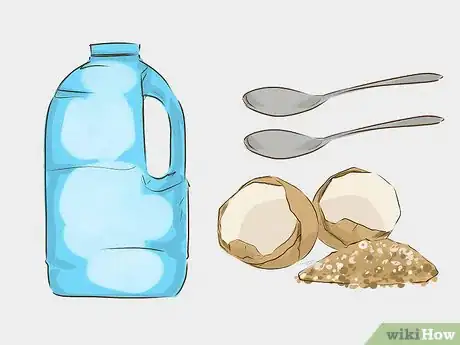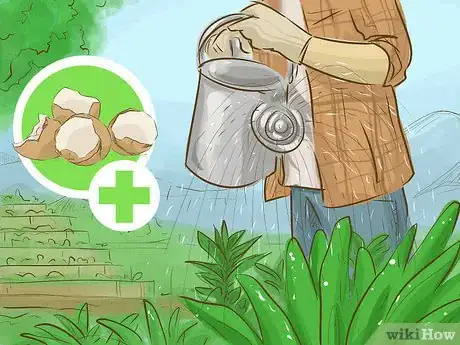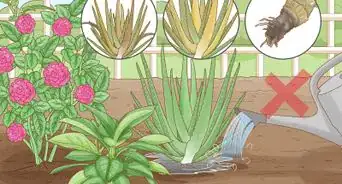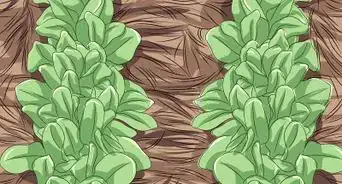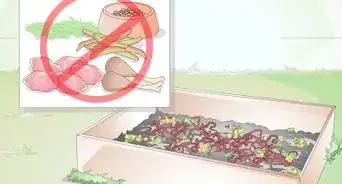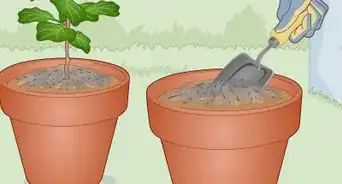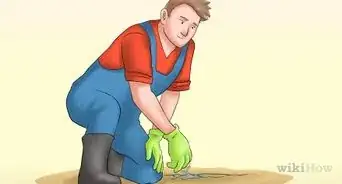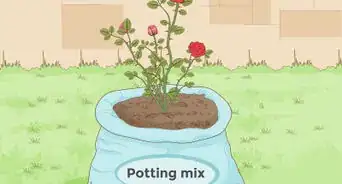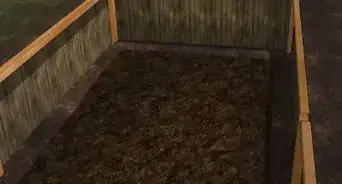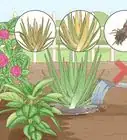This article was co-authored by Lauren Kurtz. Lauren Kurtz is a Naturalist and Horticultural Specialist. Lauren has worked for Aurora, Colorado managing the Water-Wise Garden at Aurora Municipal Center for the Water Conservation Department. She earned a BA in Environmental and Sustainability Studies from Western Michigan University in 2014.
wikiHow marks an article as reader-approved once it receives enough positive feedback. In this case, 92% of readers who voted found the article helpful, earning it our reader-approved status.
This article has been viewed 69,994 times.
Calcium promotes the healthy growth of plants in a wide variety of ways. For instance, it loosens soil to allow it to absorb more water, and it increases the strength of a plant’s cells. Add calcium to your soil easily by applying eggshells or soil additives to it. After following a few simple steps, you can have healthier soil and healthier plants!
Steps
Using a Soil Additive
-
1Test your soil's pH level to determine which additive you need. The most common way to add calcium to soil is to use a soil additive. The two most common soil additives to raise calcium levels are lime and gypsum. Before choosing one, test your soil’s pH to figure out which one will work best for your needs.[1]
- If you need to raise your pH, use lime.[2]
- If you need your pH to remain stable, use gypsum.
-
2Buy soil additive from a gardening supply store. You can buy gypsum or lime at most gardening supply stores. For instance, you will usually be able to find them in the gardening section of stores like Home Depot and Lowes. You can also buy them online from Amazon and other stores.Advertisement
-
3Spread additive using a lime or fertilizer spreader. If you need to spread just a bit of additive, use your hands (just make sure you wash them before touching anything else!).[3] But if you are trying to cover a larger area you may want to use a fertilizer spreader to be more efficient.[4]
- The amount of additive you need to apply will depend largely on your needs and your soil pH level. Research your needs before determining the amount you want to use.[5]
- If you are using lime, till it into the soil so that it mixes in thoroughly.[6]
- If you are using gypsum, spread it over the surface of the soil and then water it in until the soil absorbs it.
-
4Monitor soil and reapply additive annually or as needed. You might only need to add more lime or gypsum once every year, but keep a close eye on your soil to determine how often you need to add calcium. If your soil is used to produce large amounts of crops, for instance, you may need to add calcium more frequently.[7]
Using Eggshells
-
1Save eggshells. If you’re trying to add some calcium to a smaller area of soil, eggshells can be an effective and thrifty solution. To start using eggshells in your garden, simply save the empty shells you accrue from cooking and baking.[8]
-
2Store eggshells in an empty container for at least 2-3 days to dry them. Eggshells need to be as dry as possible before you can use them in soil. This will help their calcium be absorbed into the soil fully. Set your eggshells aside in an empty coffee can or other dry container.[9]
-
3Grind the eggshells into a powder using a food processor or blender. Dry eggshells should grind up easily. The powder should have the consistency of ground coffee or flour. The finer you grind the shells, the more effectively the soil will absorb their calcium.[10]
-
4Till the powder into the soil. Mix the powder into the soil after spreading it by using a tilling machine or your hands, if the area is small. Adding the powder a few weeks before you plant your seeds will help ensure that the soil is in good condition for growing. If there are already plants growing in the soil, though, spread the powder around the plants.
-
5Mix the eggshell powder with water if you don't have a tiller. Add about 2 tablespoons (30 ml) (28.3 g) of eggshell powder into 1 gallon (3.8 L) and stir. Once it's combined, pour the mixture over plants and soil alike.
-
6Add more eggshell powder as needed. Monitor the growth of your plants. If you think they are having difficulty growing, add more eggshell powder to improve the soil. If your plants seem to be flourishing, you probably won’t need to add any more.
Community Q&A
-
QuestionWill calcium from egg shell increase pH in soil?
 NinoxTop AnswererCalcium from eggs does not have any effect on the soil pH, unlike calcium from lime or gypsum.
NinoxTop AnswererCalcium from eggs does not have any effect on the soil pH, unlike calcium from lime or gypsum. -
QuestionHow long does it take for plants to absorb calcium from eggshells?
 NinoxTop AnswererIt depends on the type of plants; it takes between six months and a year for a full absorption of calcium.
NinoxTop AnswererIt depends on the type of plants; it takes between six months and a year for a full absorption of calcium.
References
- ↑ http://www.abc.net.au/gardening/stories/s4119027.htm
- ↑ https://www.noble.org/news/publications/ag-news-and-views/2002/february/top-10-liming-questions/
- ↑ http://www.abc.net.au/gardening/stories/s4119027.htm
- ↑ https://fabe.osu.edu/sites/fabe/files/imce/files/Soybean/GypsumFactSheet.pdf
- ↑ https://fabe.osu.edu/sites/fabe/files/imce/files/Soybean/GypsumFactSheet.pdf
- ↑ https://www.noble.org/news/publications/ag-news-and-views/2002/february/top-10-liming-questions/
- ↑ https://www.noble.org/news/publications/ag-news-and-views/2002/february/top-10-liming-questions/
- ↑ http://www.grow-it-organically.com/organic-calcium-sources.html
- ↑ http://www.grow-it-organically.com/organic-calcium-sources.html
About This Article
Adding calcium to your soil can help your plants to absorb water and grow stronger. The easiest way to add calcium to your soil is to buy a soil additive, like lime or gypsum, from a garden centre. Lime will help to raise the pH of your soil, while gypsum maintains its pH. It’s best to do a pH test to see which one will work best for your soil. Alternatively, you can use old eggshells to add calcium to a small patch of soil. Just collect old eggshells and leave them to dry for 2 to 3 days. Then, grind them in a blender or food processor. Sprinkle your ground eggshells or soil additive onto your soil or use a fertilizer spreader to cover large areas. For more tips from our Gardening co-author, including how to test your soil’s pH level, read on!
